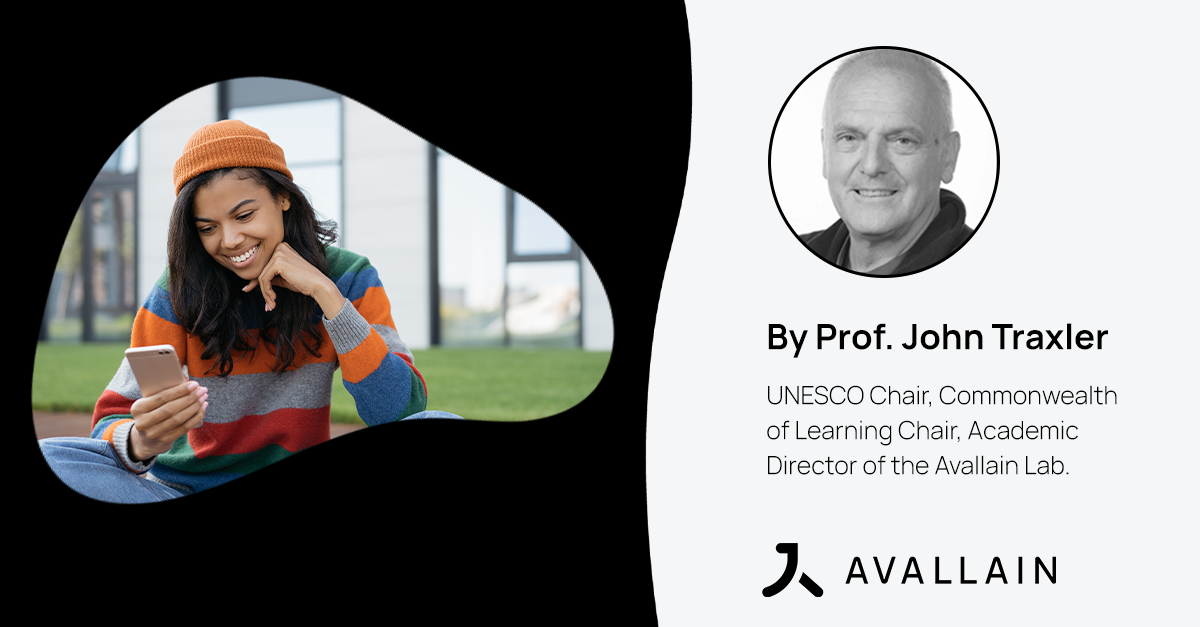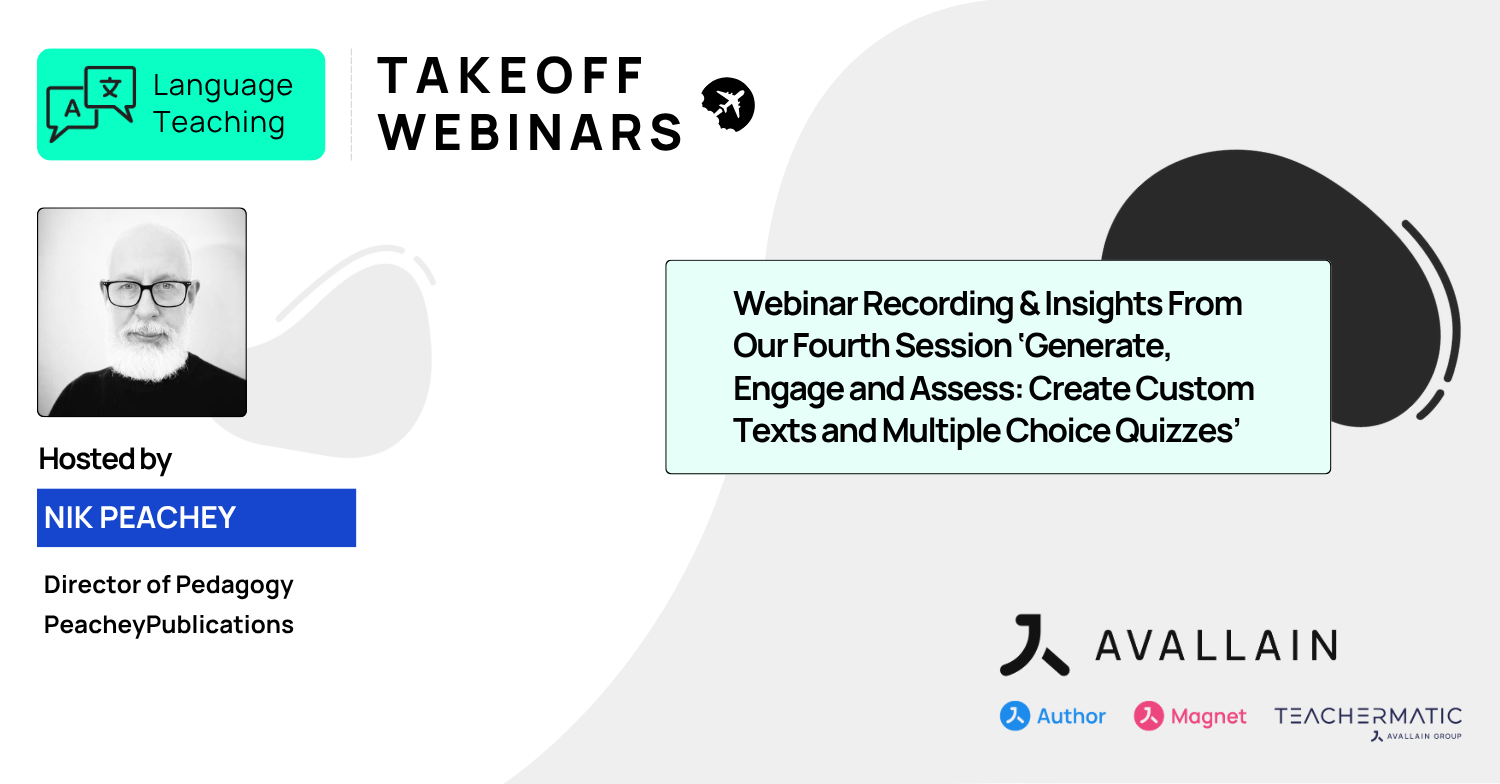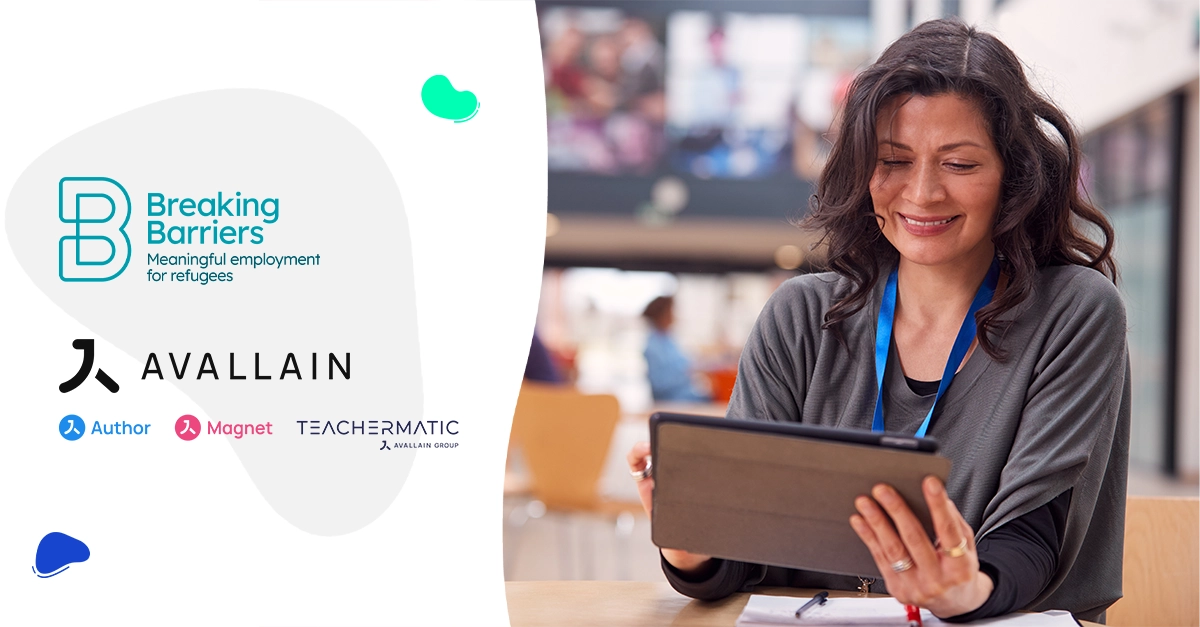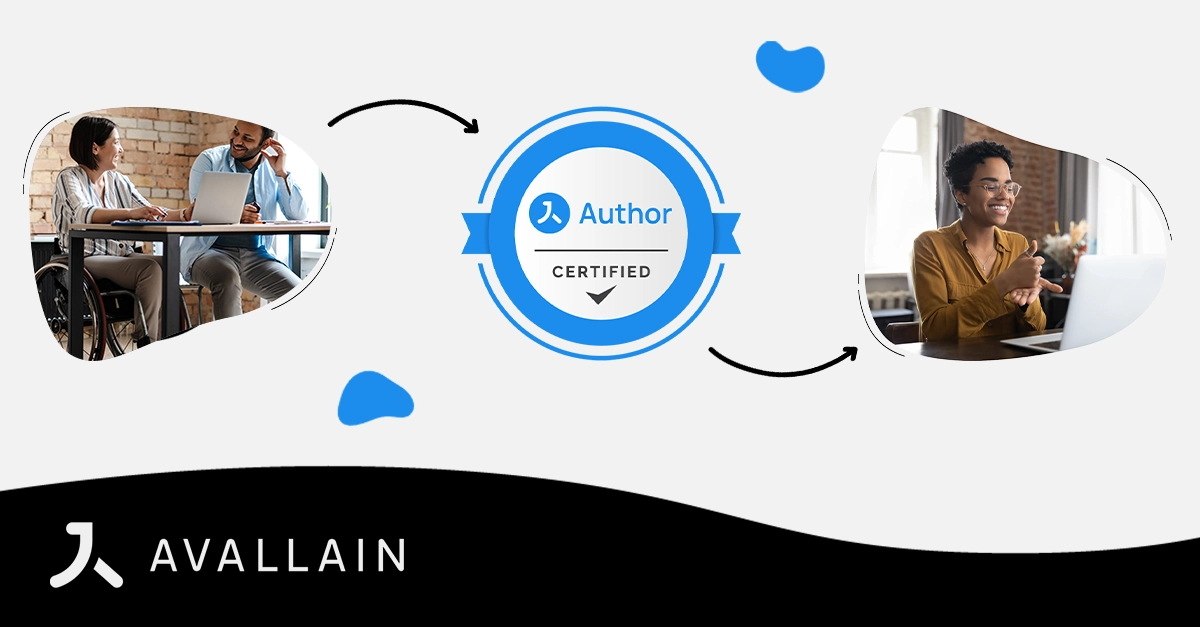What if mobile learning had the intelligence and context it lacked 25 years ago? This piece revisits the rise and fall of early mobile learning projects and considers how the convergence of artificial intelligence, contextual mobile data and educational expertise could support more responsive and personalised learning today.
Bringing Mobile Learning Back with AI, Context and Expertise
Author: Prof John Traxler, UNESCO Chair, Commonwealth of Learning Chair and Academic Director of the Avallain Lab
St. Gallen, July 28, 2025 – Around 25 years ago, many members of the European edtech research community, myself included, were engaged in projects, pilots and prototypes exploring what was then known as ‘mobile learning’. This roughly and obviously referred to learning with mobile phones, likely 3G, nearing the dawn of the smartphone era. Learners could already access all types of learning available on networked desktops in their colleges and universities, but they were now freed from their desktops. The excitement, however, was around all the additional possibilities.
One of these was ‘contextual learning,’ meaning learning that responded to the learner’s context. Mobile phones knew where they were, where they had been and what they had been doing1. These devices could capture images, video and sound of their context, including both the user and their surroundings. This meant they could also understand and know their user, the learner.
So, to provide some examples:
- Walking around art galleries like the Uffizi and heritage sites like Nottingham Castle, learners with their mobile phones could stop at a painting randomly and receive a range of background information, including audio, video and images. The longer they stayed, the more they would receive. Based on other paintings they had lingered at, they could get suggestions, explanations and perspectives on what else they might like and where else they could go.
- Augmented reality on mobile phones meant that learners standing in Berlin using their mobile phone as a camera viewfinder could see the Brandenburg Gate, but with the now-gone Berlin Wall interposed perfectly realistically as they walked up to and around it. Similarly, they could see Rembrandt’s house in Amsterdam. Learners could also walk across the English Lake District and see bygone landforms and glaciers, or engage in London murder mysteries, looking at evidence and hearing witnesses at various locations.
- Recommender systems on mobile phones analysed learners’ behaviours, achievements and locations to suggest the learning activity that would suit them best based on their history and context. These recommendations could be linked to assignments, resources and colleagues on their university LMS, providing guidance and practical advice. For example, in a Canadian project, there are specific applications in tourism.
- Using a system like Molly Oxford on their mobile phones, learners could be guided to the nearest available loan copy of a library book they wanted. They could also be given suggestions based on public transport, wheelchair accessible footpaths and library opening hours.
- Trainee professionals, such as physiotherapists or veterinary nurses, in various projects across Yorkshire, could be assessed while carrying out a healthcare procedure in ‘real-life’ practice. Their mobile phones would capture the necessary validation and contextual data to ensure a trustworthy process.
- Some early experiments, with Bluetooth and other forms of NFC (near-field communication), allowed passers-by or students to pick up comments or images hanging in discrete locations, such as a subway or corridor on a university campus, serving as sign-posting or street art.
These pilots and projects implemented situated2, authentic3 and personalised4 learning as aspects of contextual learning, and espoused5 the principles of constructivism6 and social constructivism7. This was only possible as far as the contemporary resources and technologies permitted. They did not, however, encourage or allow content to be created, commented on, or contributed to by learners, only consumed by them. Also, they usually only engaged with learners on an individual basis, not supporting interaction or communication among learners, even those learning the same thing, at the same place and at the same time.
So what went wrong? Why aren’t such systems widespread across communities, galleries, cultural spaces, universities and colleges any more? And how have things changed? Could we do better now?
The Downfall of Mobile Learning: What Went Wrong?
Mobile phone ownership was not widespread two decades ago, and popular mobile phones were not as powerful as they are today. The ‘apps economy’8 had not taken off. This meant that projects and pilots had to develop all software systems from scratch and get them to interoperate9. They also had to fund and provide the necessary mobile phones for the few learners involved10.
Once the pilot or project and its funding had finished, its ideas and implementation were not scalable or sustainable; they were unaffordable. Pilots and projects were usually conducted within formal educational institutions among their students. Also, evaluation and dissemination focused on technical feasibility, proof-of-concept and theoretical findings. They rarely addressed outcomes that would sway institutional managers and impact institutional performance metrics. As a result, these ideas remained optional margins of institutional activity rather than the regulated business of courses, qualifications, assessments and certificates. Nor was there a business model to support long-term adoption.
In fairness, we should also factor in the political and economic climate at the end of the 2000s. The ‘subprime mortgage’ crisis11 and the ‘bonfire of the quangos’12 depleted the political goodwill and public finances for speculative development work. Work that had previously and implicitly assumed the ‘diffusion of innovations’13 into mainstream provision. That ‘trickle down’ would take these ideas from pilot project to production line.
The Shift in Mobile Learning: What Changed?
Certainly not the political or economic climate, but mobile phones are now familiar, ubiquitous and powerful, and so is artificial intelligence (AI), also familiar, ubiquitous and powerful. Both of these technologies are outside educational institutions rather than confined within them.
These earlier pilots and projects were basically ‘dumb’ systems, with no ‘intelligence’, drawing only on information previously loaded into their closed systems. Now, we have ‘intelligence’, we have AI and we have AI chatbots on mobile phones. However, currently, AI lacks context and cannot know or respond to the location, history, activity or behaviour of the learner and their mobile phone. Unfortunately, many current AI applications and chatbots are stateless and do not retain memory across interactions, and this represents a further challenge to any continuity.
The Possibilities of Mobile Learning: Could We Do Better Now?
Today’s network technologies can enable distributed connected contributions and consumption, enabling writing and reading. These might realise more of the possibilities of constructivism and social constructivism. They could enable educational systems to learn about and respond to their individual learners and their environment, connecting groups of learners and showing them how to support each other14.
So, is there the possibility of convergence? Is it possible to combine the ‘intelligence’ of AI, the ‘memory’ of databases and the context provided by mobile phones, including both the learner and their environment? Could this be merged and mediated by educational expertise, acting as an interface between the three technologies, filtering, selecting and safeguarding?
What might this look like? We could start by adding ‘intelligence’ and ‘memory’ to our earlier examples.
The Future of Mobile Learning: What Could it Look Like?
In terms of formal learning, our previous examples of the Uffizi Galleries, the Lake District, the Berlin Wall and Nottingham Castle are easy to extrapolate and imagine. Subject to a mediating educational layer, learners would each be in touch with other learners, helping each other in personalised versions of the same task. They could receive background information, ideas, recommendations, feedback and suggestions, cross-referenced with deadlines, schedules and assignments from their university LMS, all based on the cumulative history of their individual and social interactions and activities.
When it comes to community learning or visitor attractions, systems could be created that encourage interactive, informal learning. For example, a living local history or 3D community poem spread around in the air, held together by links and folksonomies15, perhaps using tags to connect ideas, a living virtual world overlaying the real one. These systems could also support more prosaic purely educational applications, combining existing literary, artistic or historical sources with personal reactions or recollections.
Technically, this is about accessing the mobile phone’s contextual data, but sometimes other simple mobile data communications, for context. It also requires querying a relational database16 to retrieve history and constraints, and perhaps an institutional LMS, to retrieve assignments, timetables and course notes. AI can then be prompted to bring these together for some educational activity. Certainly, a proof of concept is eminently feasible. The expertise and experience of the three core disciplines are still out there and only need to be connected, tasked and funded.
Conclusions and Concerns
This piece sketches some broad educational possibilities once we enlist AI to support various earlier kinds of contextual mobile learning. Specific implementations and developments must address considerable social, legal, ethical and regulatory concerns and requirements. The earlier generation of projects might have already worked with these, privacy and surveillance being the obvious ones. Still, AI adds an enormous extra dimension to these, and there are other concerns like digital over-saturation, especially of children and vulnerable adults.
Nonetheless, this convergence of AI, contextual mobile data and educational expertise promises a future where learning is not confined to traditional settings but is a fluid, intelligent and deeply embedded aspect of our daily lives, making education more effective, accessible and aligned with individual and societal needs.
Mobile Learning & GenAI for the Less Privileged, Refugees & the Global South
How can mobile learning and GenAI reach those traditionally left out of educational innovation?
In a recent episode of Silver Lining for Learning, an award-winning webinar and podcast series, Prof. John Traxler joined a panel to discuss how mobile learning and generative AI can support less privileged learners, including refugees and communities in the Global South.
The episode, ‘Mobile Learning & GenAI for the Less Privileged, Refugees & the Global South,’ builds on many of the questions raised in this article. It explores how mobile technologies have and haven’t fulfilled their potential, and what role GenAI might now play in addressing longstanding educational inequalities.
Watch the full episode:
- There is considerable literature, including:
Special editions: Research in Learning Technology, Vol. 17, 2009.
Review articles: Kukulska-Hulme, A., Sharples, M., Milrad, M., Arnedillo-Sanchez, I. & Vavoula, G. (2009). Innovation in mobile learning: A European perspective. International Journal of Mobile and Blended Learning, 1(1), 13–35.
Aguayo, C., Cochrane, T. & Narayan, V. (2017). Key themes in mobile learning: Prospects for learner-generated learning through AR and VR. Australasian Journal of Educational Technology, 33(6).
Edited books: Traxler, J. & Kukulska-Hulme, A. (Eds) (2015), Mobile Learning: The Next Generation, New York: Routledge. (Also available in Arabic, 2019.)
More philosophically, Traxler, J. (2011) Context in a Wider Context, Medienpädagogik, Zeitschrift für Theorie und Praxis der Medienbildung. The Special Issue entitled Mobile Learning in Widening Contexts: Concepts and Cases (Eds.) N. Pachler, B. Bachmair & J. Cook, Vol. 19, pp. 1-16. ↩︎ - Meaning, ‘real-life’ settings. ↩︎
- Meaning, ‘real-life’ tasks. ↩︎
- Meaning, learning tailored to each separate individual learner. ↩︎
- Educational technology researchers distinguish between what teachers say, what they ‘espouse’, and what they actually do, what they ‘enact’, usually something far more conservative or traditional. ↩︎
- An educational philosophy based on learners actively building their knowledge through experiences and interactions. ↩︎
- A variant of constructivism that believes that learning is created through social interactions and through collaboration with others. For an excellent summary of both, see: https://www.simplypsychology.org/constructivism.html ↩︎
- For an explanation, see: https://smartasset.com/investing/the-economics-of-mobile-apps ↩︎
- A common term among computing professionals, referring to whether or not different systems, such as hardware, software, applications and peripherals, will actually work together, or whether it would be more like trying to fit a UK plug into an EU socket. ↩︎
- A more detailed account is available at: https://medium.com/@Jisc/what-killed-the-mobile-learning-dream-8c97cf66dd3d ↩︎
- For an explanation, see:https://en.wikipedia.org/wiki/Subprime_mortgage_crisis ↩︎
- For an explanation, see: 2010 UK quango reforms – Wikipedia, which impacted Becta, the LSDA, Jisc and other edtech supporters. ↩︎
- For an explanation, see: https://en.wikipedia.org/wiki/Diffusion_of_innovations ↩︎
- The proximity of physical or geographical context that the location awareness of neighbouring mobile phones could extend to embrace social proximity, meaning learners who are socially connected, or educational proximity, meaning learners working on similar tasks. The latter idea connects to the notions of ‘scaffolding’, ‘the more knowledgeable other’ and ‘the zone of proximal development’ of the theorist Vygotsky. For more, see: https://en.wikipedia.org/wiki/Zone_of_proximal_development ↩︎
- Databases conventionally have a fixed structure, for example, personal details based on forename, surname, house name, street name and so on, with no choice. Folksonomies, by contrast, are defined by the user, often on the fly. For example, tagging with labels such as ‘people I like’, ‘people nearby’, ‘people with a car’. Diigo, a social bookmarking service, uses tagging to implement a folksonomy. ↩︎
- Relational databases, unlike ‘flat’ databases based solely on a file, capture relationships, such as a teacher working in a college or a student enrolling in a course, and include all the various individual teachers, courses, students and colleges. ↩︎
About Avallain
At Avallain, we are on a mission to reshape the future of education through technology. We create customisable digital education solutions that empower educators and engage learners around the world. With a focus on accessibility and user-centred design, powered by AI and cutting-edge technology, we strive to make education engaging, effective and inclusive.
Find out more at avallain.com
About TeacherMatic
TeacherMatic, a part of the Avallain Group since 2024, is a ready-to-go AI toolkit for teachers that saves hours of lesson preparation by using scores of AI generators to create flexible lesson plans, worksheets, quizzes and more.
Find out more at teachermatic.com
_
Contact:
Daniel Seuling
VP Client Relations & Marketing
dseuling@avallain.com



